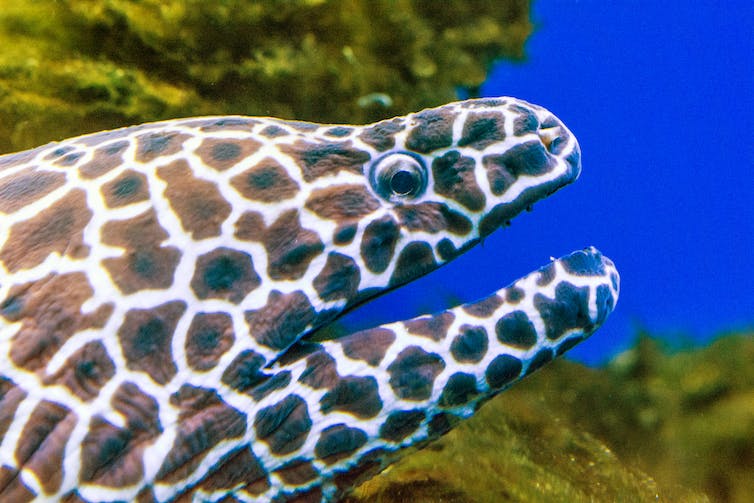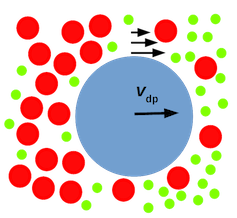Patterns on animal skin, such as zebra stripes and poison frog color patches, serve various biological functions, including temperature regulation, camouflage and warning signals. The colors making up these patterns must be distinct and well separated to be effective. For instance, as a warning signal, distinct colors make them clearly visible to other animals. And as camouflage, well-separated colors allow animals to better blend into their surroundings.
In our newly published research in Science Advances, my student Ben Alessio and I propose a potential mechanism explaining how these distinctive patterns form – that could potentially be applied to medical diagnostics and synthetic materials.
A thought experiment can help visualize the challenge of achieving distinctive color patterns. Imagine gently adding a drop of blue and red dye to a cup of water. The drops will slowly disperse throughout the water due to the process of diffusion, where molecules move from an area of higher concentration to lower concentration. Eventually, the water will have an even concentration of blue and red dyes and become purple. Thus, diffusion tends to create color uniformity.
A question naturally arises: How can distinct color patterns form in the presence of diffusion?
Movement and boundaries
Mathematician Alan Turing first addressed this question in his seminal 1952 paper, “The Chemical Basis of Morphogenesis.” Turing showed that under appropriate conditions, the chemical reactions involved in producing color can interact with each other in a way that counteracts diffusion. This makes it possible for colors to self-organize and create interconnected regions with different colors, forming what are now called Turing patterns.
However, in mathematical models, the boundaries between color regions are fuzzy due to diffusion. This is unlike in nature, where boundaries are often sharp and colors are well separated.

Moray eels have distinctive patterns on their skin.
Asergieiev/iStock via Getty Images
Our team thought a clue to figuring out how animals create distinctive color patterns could be found in lab experiments on micron-sized particles, such as the cells involved in producing the colors of an animal’s skin. My work and work from other labs found that micron-sized particles form banded structures when placed between a region with a high concentration of other dissolved solutes and a region with a low concentration of other dissolved solutes.

The blue circle in this diagram is moving to the right due to diffusiophoresis, as it is swept along with the motion of the red circles moving into an area where there are more green circles.
Richard Sear/Wikimedia Commons, CC BY-SA
In the context of our thought experiment, changes in the concentration of blue and red dyes in water can propel other particles in the liquid to move in certain directions. As the red dye moves…



